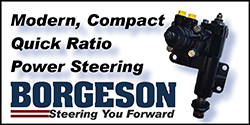Hi all,
Sunday I decided to hook up fuel and start the 1969 340X for the first time, what a glorious sound, and a milestone for this build. A substantial inlet bowl fitting leak shut things down and kicked my butt for the next hour so the run time was all of 15 seconds. This is only the 3rd new motor ive started in my life so I have limited experience but am aware of cam flattening dangers. My touted and experienced buddy who ( has built countless sprint car and hot rod engines)built the motor has cautioned me in that the assembly lube is probably gone now and no more dry runs, the next time it fires, it's gotta go 15 minutes at 2k rpm which I plan on doing. Needless to say im feeling some stress.
What has been your experiences breaking in new engines and having to pause? I can add, the build sheet is still awol so I don't have compression or cam specs. If your wondering here's the complete engine story which explains my apparent casualness and ignorance of the internals - in 2014 I had a truck fire in my warehouse, sprinklers killed the fire, enter fire restoration, so the whole building was gutted. I asked my buddy Bob if I could store my 340 parts at his place for awhile during fire restoration. Unbeknownst to me he went ahead and built this motor as a surprise and at no cost. This thing sounds like a high strung beast, lots of cam lope, just sounds incredible. Im back to only 4 or 5 hours of sleep like a kid waiting for Santa.
Thanks
View attachment 1715668631

















